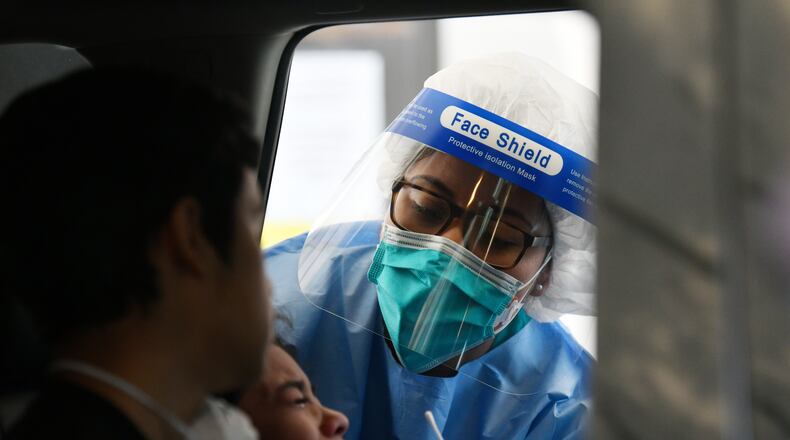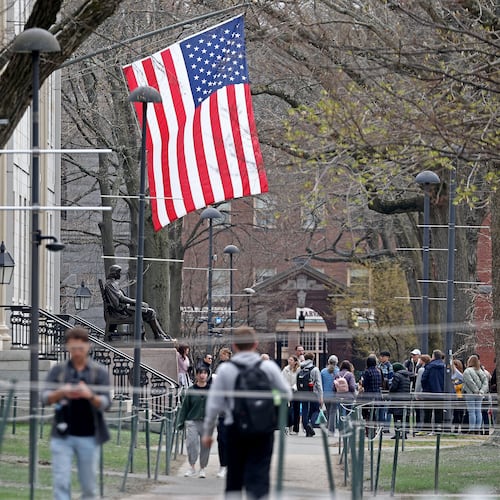Recently, The American Academy of Pediatrics issued a statement that, over time, became warped into “U.S. pediatricians want schools to open.” Although, this was not exactly the message that was put forth in the statement, because of the political climate, every statement is up for interpretation.
As a member of the AAP, I was initially shocked that the statement was made. I checked my email to ensure there was no poll that I missed —there was not. I became enraged that a statement would be made amidst a new wave, or continuation of the first wave, of coronavirus infections, as well as increased hospitalizations across the country, so I decided to read the sources that sparked this “urge.”
The claim, based on research actively being done across the globe, is that children have a lower rate of transmission, that if infected, they have a lower mortality rate, and maybe won’t show symptoms at all. The studies I read were done in England, China, and Germany. Countries with far less cases, far less deaths, and a far greater response to the virus itself. These studies were based on in-depth contact tracing, which has yet to be developed in the United States. At the time of this writing, the United States had 3.11 million confirmed cases, with 186,000 deaths associated with COVID-19 (roughly 6% death rate). Worldwide, there had been 12 million confirmed cases with 548,000 deaths (roughly 4.6% death rate). The United States, which is only 4.25% of the world’s population, had 26% of the confirmed cases and 34% of the deaths. I use these numbers to show that our response to coronavirus was poor (but we already knew that).
Credit: contributed
Credit: contributed
Because one of the first confirmed cases in Atlanta was in a middle school teacher, we were one of the first cities to close schools. The first schools in Atlanta were closed March 9th, with virtually all districts in the metropolitan area following suit on March 16th and remaining closed until the start of summer. Effectively, children in Atlanta have been the one group quarantined the longest. During this time, before research had been published, the idea that children do not get as sick became pervasive and children were not even tested for the virus. How can you study transmission if you are not testing children? We all knew that testing was not widely available, and in some places still not as readily available. In fact, there remain places that will not test children, so again, how do we know if we don’t test?
As a pediatrician, I know the importance of in-person education. I know that children engage in social, emotional, mental, and physical growth at school. I know that children are missing their friends and teachers. Being a pediatrician in Atlanta, I also know the socioeconomic disparities that plague our public schools that do not make it feasible for virtual learning. I have families with multiple children attempting to utilize one computer without sustainable internet access. Other families have food insecurity and have struggles to ensure healthy lifestyles without the guaranteed meals provided at school. I know the toll that virtual learning has taken on some families and can only imagine the toll that will be taken when children return to school for an “abbreviated” schedule.
So, what was the point of writing this? This contains no answers or solutions and could be dismissed as merely a pessimistic view on the fall. My answer is simple, The Hippocratic Oath. When graduating medical school, physicians take the Hippocratic Oath and the most notable line is “Do No Harm”. In everything, in all decisions, do no harm. Do I think the people who are urging schools to open are trying to harm? Of course not. Do I think there is simply not enough evidence to suggest these claims that children are effectively invincible to coronavirus? Yes. How can we realistically discuss infectious ability if we are not even testing the population in question? For Georgia, contact tracing has been more of a myth than a true reality and with the shutdown over, there is no way to accurately contact trace at this point.
The CDC guidelines are not realistic for most public schools which suffer from overcrowded classrooms, underfunded schools, and underpaid teachers. How do we expect classrooms that barely have paper and pencils to ensure that every child has a mask? How can we ensure there is enough hand sanitizer and wipes to actually be beneficial when those items are not always readily available in stores? With Georgia heading into record numbers of cases, hospitalizations, ventilator use, and deaths, this pediatrician thinks that we should consider what it would mean if maybe, just maybe, our previous thoughts are completely incorrect. What if putting our children together, in close quarters, could actually do harm?
Postscript Aug. 10:
Since writing this piece a little less than a month ago, we have witnessed that children are just as likely to contract the virus, even if the symptoms remain less severe. As children have come out of quarantine to attend summer camps, with sports resuming for nearly all ages, and schools returning for in-person learning, we have seen the positive cases continue to rise. At this time, roughly 16,000 children under 17 years of age have tested positive for the coronavirus in Georgia. Because of the delay between exposure and symptom development, I believe we are just seeing the beginning of what the coronavirus will look like for children. One thing is becoming painfully obvious, yet seemingly easy to ignore, we are not going to see the end of the coronavirus any time soon.
Brittany R. Cole, M.D., is a pediatrician in College Park. She is an alumna of Spelman College and completed her pediatric residency at Morehouse School of Medicine.
About the Author
Keep Reading
The Latest
Featured




